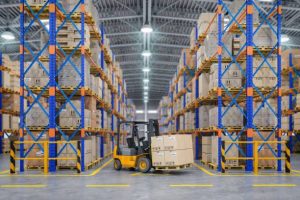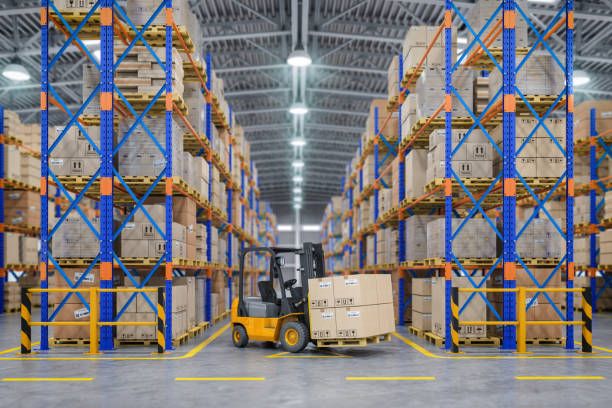Reducing Damage Caused by Forklifts
Forklifts can do a lot of damage. Sometimes, the damage can be spectacular enough to make the news. At other times, the damage might be minor. Either way, damage caused by forklifts costs money and could also be forklift operator related. OSHA and other international occupational safety institutions have done extensive research on the causes of forklift accidents and damage caused by forklifts. They have all come to the same conclusion: MOST FORKLIFT DAMAGE IS PREVENTABLE. Here are some ways to reduce or even eliminate damage caused by lift trucks in your workplace.
Check Your Pallets
Pallets are the “interface” between a forklift and the load it is carrying. Over time, pallets can get damaged in a number of ways. Take a minute to visually inspect your empty pallets from time to time. Look for loose nails and loose or broken stringers in particular. If a stringer is loose or broken, fix or replace the pallet before the stringer gets caught up on a pallet rack or becomes wobbly and no longer able to keep a loaded stable.
Remove Obstructions
Forklifts aren’t designed to run obstacle courses. Every time a lift truck has to swerve around an obstruction, there is a greater risk of a load toppling over or the load accidentally hitting a wall or pallet rack. Keep aisles free of obstructions so the forklifts can go straight to their destination. This will not only help prevent damage, it will also improve efficiency.
Maintain Your Forklifts
Forklift maintenance is of paramount importance. A sloppy steering mechanism, poorly maintained brakes, leaking hydraulic fluid and other “minor” problems can be the cause of major accidents and damage. In a previous blog, Used Forklifts Not to Blame for Most Forklift Accidents, we used the dramatic example of a forklift operator’s death to bring home this message. An OSHA investigation revealed that axle damage and a slack steering mechanism were two major contributors to the accident.
Light Up Your Workplace

Image courtesy of iStock by Getty Images – Photo by Bet_Noire
Poor lighting makes it much harder for forklift operators to judge distances. More often than not, forks cause damage because of a miscalculation of an inch or even less. Good lighting not only helps your forklift operators judge distances better, it helps prevent fatigue, which is another major cause of forklift accidents.
Balance Your Load
Forklifts are designed for balanced loads. Every forklift operator knows this, but unbalanced and unsecured loads remain a primary cause of damage. Forklift operators who make a habit of carrying balanced and secure loads are as fast as those who cut corners to save time and cause far fewer accidents and less damage.
OSHA statistics focus largely on forklift injuries and fatalities. According to OSHA, forklifts cause nearly 100,000 serious or minor injuries and 11% of forklifts in America are involved in accidents every year. Damage caused by forklifts goes virtually unreported, but from those statistics alone you can imagine how much money is lost due to forklift damage. Take simple precautions like those listed above and make your work environment safer and more profitable.

